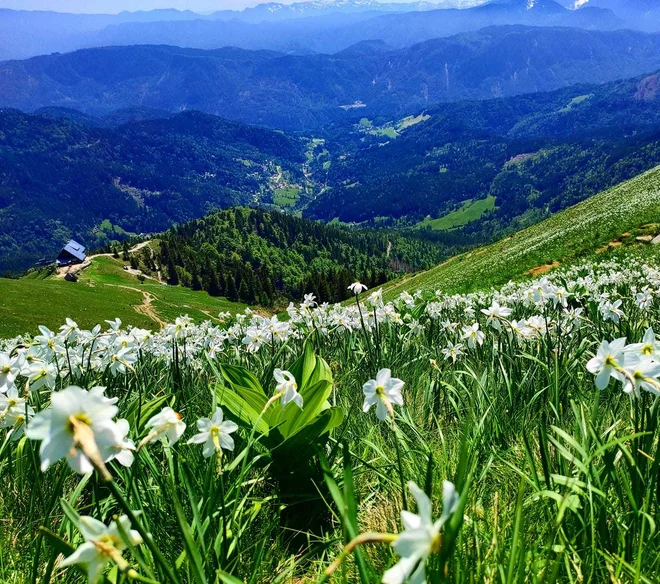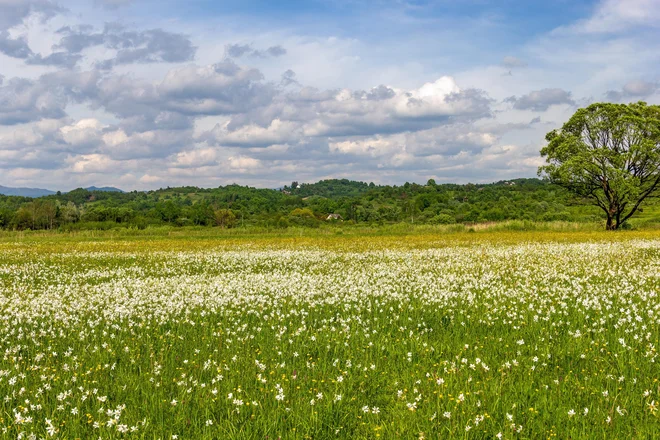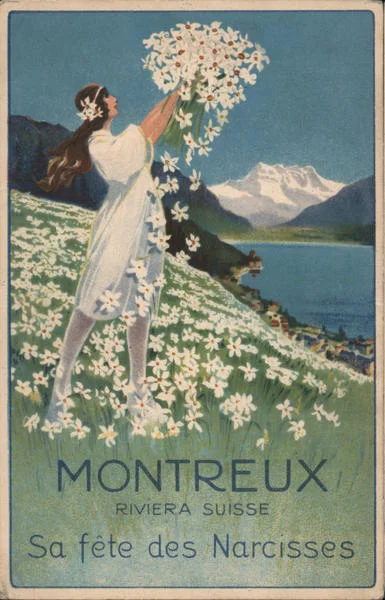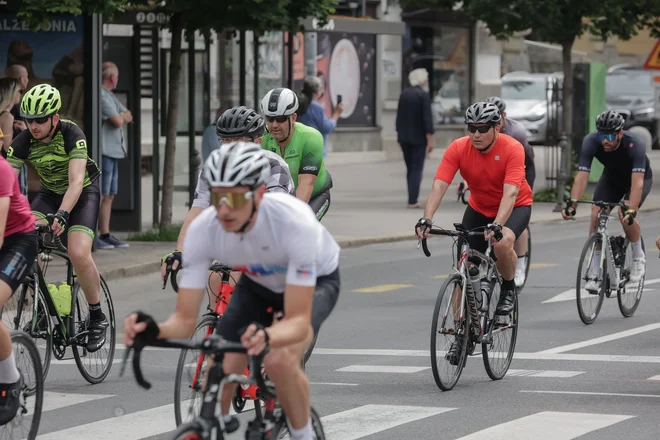The real kingdom of wild white daffodils are Carpathians

These days from the meadows on Goal They are also saying the last flowering daffodils that make every May true narcissist. This year was a record by the number of visitors, the Jesenice TIC told us, and a record number of enthusiasts from abroad was noticed. In addition to traditional Croatian tourists, mass blooming wild white daffodils (Narcissus poeticus) Mirror also many foreigners from all over Europe, mostly from Germany and Austria.
Golica is 34 hectares and a high density of flowers among the largest wild daffodils in Europe. Photo: Luka Horvat
Domestic farmers from the village of Jesenice Rovt, Planina pod Golica, arrivals and Javorniški Rovt are the most deserving of Golica every year, the most deserving of the village of Jesenice Rovt, Planina pod Golica, who, for about 34 hectares of meadows, keep daffodils care for about 34 hectares of meadows. This means that they cancel early pasture every year, and they only mow when the daffodils are dried and the seeds are killed from them. Many meadows are still mowed by hand and thus harvesting hay, as research has shown that long -term daffodils maintain a traditional farming way.
But narcissist tourism does not only bloom in our country, and wild daffodils in such a large field do not only thrive in Karavanke, but also elsewhere in Europe. While the most cultivated daffodils of all kinds will be found in the UK, where the ancient Romans were brought, it is considered to be the true and greatest kingdom of wild white daffodils Karpati. As in our country, they are enjoyed every spring, especially in Romania, Ukraine and Poland, and in the West in several smaller locations in the Alps in Switzerland, France and Italy.
The largest areas of narcissistic meadows are in Ukraine and Romania.
In Switzerland, narcissist is a symbol of Montreux, but unfortunately it is heavily threatened.
In France, they make perfumes from flowers and reproduce them controlled.
Most of them are in Ukraine
The largest area in Europe, where wild daffodils bloom every year in the natural environment, is in the West of Ukraine, in the Carpathians. This is a valley of daffodil near Husta, a town in Zakarpathic authorities. Almost 600 hectares are home to the largest population of wild daffodils in Europe, but meadows are not completely concise and daffodils do not grow well everywhere, so some visitors were slightly disappointed in Ukraine before the war. The Narcis Valley is protected as a nature park, but also part of the Carpathian Biosphere Reserve, which was included in the international network of biosphere reserves in 1992.

Narcissus valley in Ukraine is the largest area in Europe where these flowers grow. Photo: Shutterstock
The area is also interesting because these flowers thrive there at incredibly low altitude, almost a thousand meters lower than in the Alps and elsewhere in the Carpathians. According to one of the theories, the white narcissist, whose natural environment is highlands, appeared in the Narcis valley in the icy era, when the earth from the surrounding mountains crawled into the valley and brought roots of narcissist from the mountain ecosystem.
In Romania they bloom the most on dense
Romania is a country with the most meadows of wild daffodils, scattered along the slopes of southern Carpathians, which are also known as the Transylvanian Alps. More than twenty narcissistic mountain meadows are protected as a nature reserve. Among them are the most popular south of the city of VLăița in Harghita County, where they grow on 20 acres. The area is known as the place where they thrive most densely, as they can be listed at 180 to 200 at one square meter.
According to one of the theories, white narcissus, whose natural environment is highlands, appeared in the narcissist valley in the icy age.
Somewhat smaller habitat lies near the town of Negrași in the Argeș district. This good four hectares of a large nature reserve were established in 1966, and its characteristic is that there is a very rare subspecies of white daffodils – mountain daffodils. (Narcissus poeticus ssp. Radiiflorus).
The third Romanian Golica is near Corund in Transylvania, where the narrow -in -law daffodils grow (Narcissus angustifolius). The area is not very large, but it is quite picturesque, so it is especially fond of photos for Instagram.
In Switzerland, they are extinct

White daffodils have been a symbol of Montreux for over a century. Photo: Visit Montreux
For over a century, the daffodils have been a symbol of Montreux near Lake Geneva, and the admiration of these flowers on alpine meadows is almost an event of the year and a great tourist attraction. The most lush boom is the May snow. The city of Montreux, along with the Riviera Vaud Tourist Association, has set up six narcissistic routes leading above the villages of Les Avants, Caux and Glion and the Les Pléiades plateau. In doing so, they even publish a « narcissist forecast » online to report to the followers when they are in the buds or in full bloom and when they have bloomed.
Narcissists over the Lake Geneva go to admire trains and cars from all over the country, but unfortunately experts point out that the miraculous May snow is increasingly threatened. There are fewer flowers from year to year, and they fear that a wonderful natural phenomenon without action will only be a memory.
French wild daffodils for perfume
In France, they have the most habitats on the slopes of the central massif, Jure and Provence. The most famous daffodils are on the Aubrac Plateau in Occitania in the southeast of the country, using it mainly in the perfume industry and also reproduced controlled by onion transplants. Although they are promoted as wild daffodils that grow in nature, this is not quite true, as these are actually cultivated daffodils. However, the scenes of their flowering in May and June are very popular with the French.

In Aubrac, France, flowers are harvested and used for perfumes. Photo: Aubrac Nature Park
The daffodils on Aubrac are traditionally harvested by manually and as soon as they open, because the flower contains the strongest fragrant compounds during full flowering. Habitats are not at risk, as authorities have determined quotas and introduced strict control over collection and reproduction. Narcissists are not only reproduced with seeds, but also with side bulbs, so vegetatively and immediately after the end of the floral season. When the above ground parts are dried, the workers dig the bulbs, carefully separate the side from the mother and then transplant them. They also introduced crop rotation when flowers are harvested every two years so that the plants get time for regeneration.








